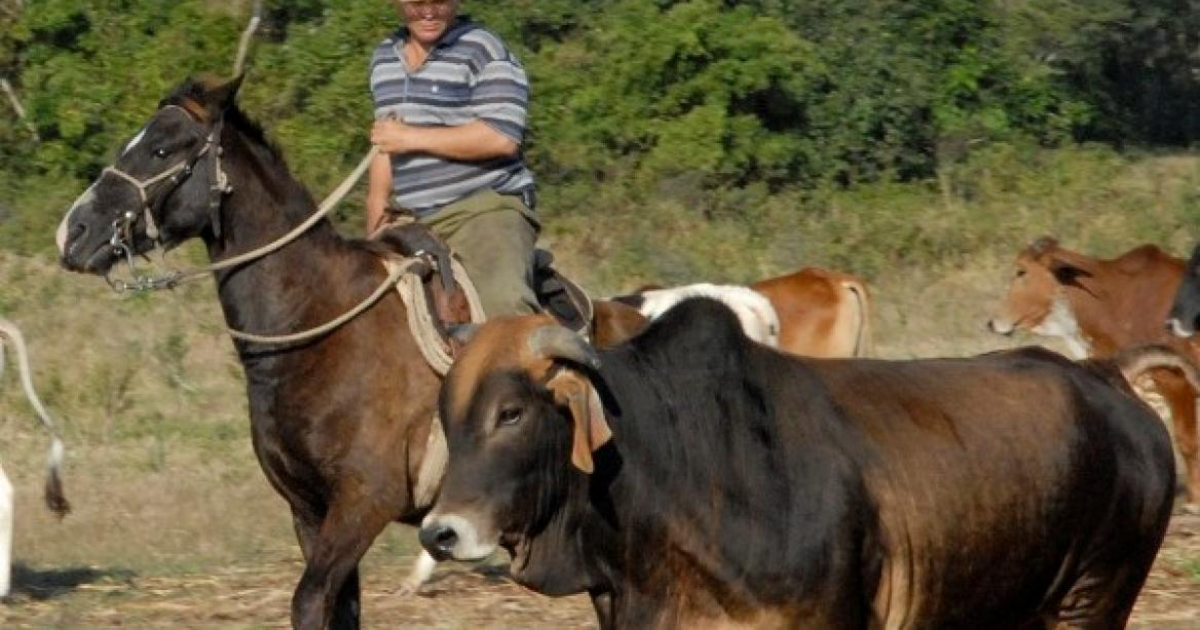
The Cuban government announced the requirements that agricultural producers must meet to to be able to market their meat from small and large livestock, a measure announced weeks ago that seeks to increase the low food production in the country.
This Thursday the Minister of Agriculture, Ydael Jesús Pérez Brito, explained the five requirements that cattle breeders (cows and buffaloes), must respect to legally slaughter, consume and sell their animals to the price set by the state.
"Requirements must be met for slaughter, consumption and marketing and, once the process has been initiated by the producer, the Agriculture Delegation has one week to respond," said the owner, quoted by the weekly. Escambray.
The first requirement is to be accredited in the land registry and in the livestock control registry.
"He landless cattle keeper is not authorized to kill; If you want, you must ask for land," the official stressed.
The second aspect refers to the obligation of comply with the meat or milk delivery plan, something that the ruler Miguel Díaz-Canel had already emphasized when he announced the measure days ago.
In the case of the sale of meat, this will depend on the annual extraction rate and slaughter weight of the beef. In the case of milk, the farmer will have to achieve a minimum of 520 liters of milk per year per cow –- for those who have between one and 10 cattle –, and 550 liters for those who exceed that figure.
The former second secretary of the Communist Party, José Ramón Machado Ventura, warned that rigor in the milk delivery plans to the government, that they had to "be tense" since "a comfortable plan will be overfulfilled by everyone."
The third requirement had also been discussed previously. The point is that to slaughter an animal, the producer must guarantee the growth of his herd.
"Once the contracted plan has been completed, the producer can sacrifice for consumption and marketing in the established category, one animal out of every three that increases in his herd," said the leader, quoted by the weekly Invader, from Ciego de Ávila.
"All productive forms can sacrifice for consumption and marketing, one animal in three of increase in his flock; that is, if it grows into three, kill one; If it increases by six, it kills two, if it grew by nine, it kills three, and so on," said Pérez Brito.
The fourth condition establishes the sacrifice of males in yearling, bull and bull category, as well as the waste females not suitable for reproduction, which must be certified by the competent authority.
Lastly, it is mandatory not have shortages in cattle.
"The first approvals for slaughter will be made starting in May with the end of 2020, so if the producer demonstrates that the mass did not grow, but he fulfilled the delivery of milk and meat last year, he can slaughter according to the established proportion" , he stressed.
The minister explained that the slaughter of livestock will be governed by prices by agreement between the parties - slaughterhouse or sanitary factory and producer - and will also be subject to the required health certification.
"The producer can eat meat, give it to his sister if she lives next door, but what you cannot sell at home"he remarked.
"The part that will market is in the specialized network approved by the government of the municipality, complying with current health regulations and at a price by agreement. also can sell to tourism, chain stores, market in MLC and in the Mariel Special Development Zone"recalled the head of the sector.
What do you think?
SEE COMMENTS (5)Filed in: